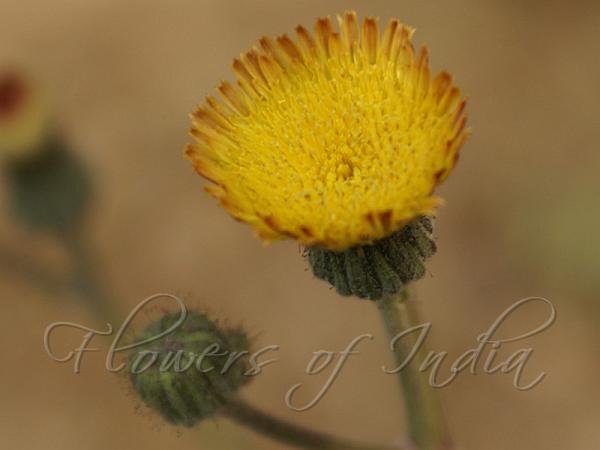|
| Bitter Sow-Thistle |
|

|

| File size | 80608 |
| Original date | 1/12/10 12:52 AM |
| Resolution | 800 x 600 |
| Flash | Flash did not fire, auto |
| Focal length | 70.0mm |
| Exposure time | 1/125s |
| Aperture | 6.3 |
| Focus Distance | |
| Metering Mode | Multi-segment |
| Camera make | SONY |
| Camera model | DSLR-A100 |
| Sensor type |
|
|
|
|
Photo: |
Botanical name: Sonchus wightianus Family: Asteraceae (Sunflower family)
Synonyms: Sonchus orixensis, Sonchus picris
Synonyms: Sonchus orixensis, Sonchus picris
Bitter Sow-Thistle is a tall perennial herb, 1-3
ft tall, with a tuft of radical leaves. Leaves are 15-30 cm long,
hairless. Lower leaves are narrowly inverted-lanceshaped, subacute,
entire or pinnately cut or runcinate-pinnatifid; middle and upper stem
leaves are lanceshaped or the uppermost linear, all with spiny-toothed
margins. Flower-heads are few, 2.5-5 cm across, umbellately corymbose.
Florets are bright yellow. Bitter Sow-Thistle is found in grasslands
on mountain slopes, grasslands in forests, forest margins, thickets,
beside fields, moist places or near water, wastelands on mountain
slopes, gravelly areas by rivers, in the Indian subcontinent at
altitudes of 300-2300 m.
Medicinal uses:  The plant is good in chronic fevers. Roots are given in jaundice,
cough, bronchitis, asthma and pertussis. Leaves are applied on
swellings. The root extract is taken both by Marma and Tanchangya for
the relief of stomach pain.
The plant is good in chronic fevers. Roots are given in jaundice,
cough, bronchitis, asthma and pertussis. Leaves are applied on
swellings. The root extract is taken both by Marma and Tanchangya for
the relief of stomach pain.
 The plant is good in chronic fevers. Roots are given in jaundice,
cough, bronchitis, asthma and pertussis. Leaves are applied on
swellings. The root extract is taken both by Marma and Tanchangya for
the relief of stomach pain.
The plant is good in chronic fevers. Roots are given in jaundice,
cough, bronchitis, asthma and pertussis. Leaves are applied on
swellings. The root extract is taken both by Marma and Tanchangya for
the relief of stomach pain. | Identification credit: Gurcharan Singh | Photographed in Delhi. |
• Is this flower misidentified? If yes,